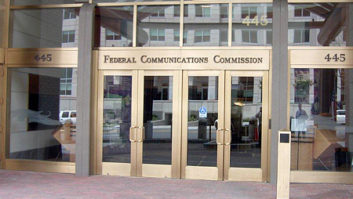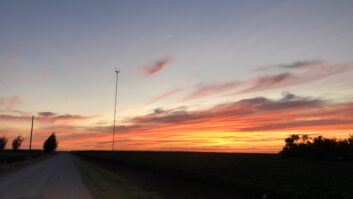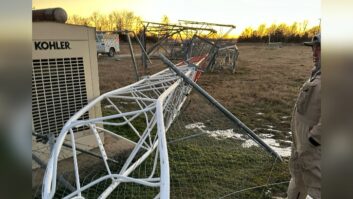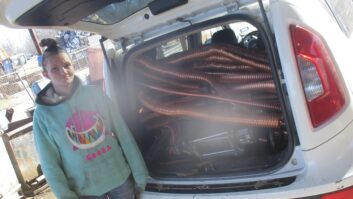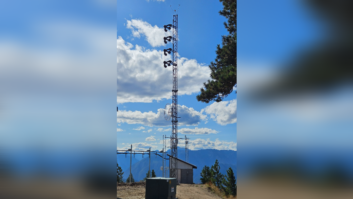As director of engineering of a medium-sized broadcast group in my day job, I have worked with a lot of tower crews over the years. Some have been knowledgeable, well-equipped and safety oriented. Others, well, not so much.
Thirty years ago, tower crews pretty much wrote their own rules. Many were made up of ironworkers who had moved into tower work. Those folks were good at fabricating and bolting stuff together, but they had limited knowledge of RF, antennas, transmission lines and RF radiation. One or two guys would come out and do a project.

Jason Kardokus
Today, we live in a different world. Tower workers are much more closely regulated by OSHA and other agencies at the federal and sometimes the state and local levels, and the owners can find themselves on the hook for huge fines if there is an accident caused by faulty equipment, improper or insufficient training or a violation of safety procedures.
Yes, there are still “fly by night” crews out there, and there are solo climbers happy to take your money in exchange for climbing your tower and changing a bulb; but many tower service companies these days toe the line, observing all the regulatory requirements, providing extensive training and focusing on safety above all else. Those are the ones I look for.
In my dealings with tower service companies on projects large and small in recent years, several such companies have risen to the top of the pile. These companies and their workers have exhibited a level of professionalism, skill, knowledge of RF, antennas and transmission lines, and safety practices that is a cut or two above the rest. These companies are my top choices geographically (and even sometimes outside their usual operational areas).
West of the Mississippi, when I have a big or difficult project, I usually call Jason Kardokus of P&R Tower and Northstar Broadcast Contractors. I first used Jason on a job in Portland, Ore., replacing a base insulator on a four-legged free-standing tower — not an easy task, and one that required special planning, fixtures, jacking the tower and precisely drilling a complex bolt pattern on a tower leg with a magnetic drill. That job came out great, as has every other job since.
Recently I had the opportunity to visit with Jason about the generalities and some specifics of the business, and I believe his insights will be of great value to our readers.
RWEE: Jason, tell us a little about yourself. What is your background and experience?
Kardokus: I first came to work for P&R Tower Company during summers in high school and college. I started working full-time for the company in 1996. In the years since, I have become a project manager for the company.
In that capacity, I have done rigging plan design/analysis, gin pole operations and tower rigger including a 1,315-foot guyed FM tower, a 400-foot guyed TV tower with a three-way candelabra, a 420-foot self-supporting tower using a 24-inch x 87-foot basket gin pole.
I have also re-guyed a 1,200-foot FM tower, designed and built multiple gin poles and rooster head assemblies, built multiple turnkey 50 kW AM directional arrays, multiple turnkey high-power multi-bay FM installations, and many turnkey microwave system installations.
In addition to that, I have attained “Train the Trainer” certifications for Climber Certification and Rescue with both ComTrain and Gravitec, RF Site Safety certification, Anritsu SiteMaster certification and “Train the Trainer” certification for crane, man-lift and forklift operations.
RWEE: Tell us about Magnum, P&R and Northstar. What are the three entities, how do they differ and interact?
Kardokus: P&R Tower Company, which is an installation company, was started by Pete Smith, our grandfather, in 1959 under the name P&R Steeple Jack. In 1976, Pete Smith and my uncle, Larry Smith, started Magnum Towers Inc., a tower manufacturing company.
Northstar Broadcast Contractors is a tower installation company and was started in 2004 by my brother Ron and me. In June 2007, Ron, Jeff (our middle brother) and I took over all financial and management responsibilities for P&R and Magnum. Since then, the companies have kept their separate identities and corporate structures, but are under the same ownership and insurance.

A crew from P&R installs a microwave antenna in Southern California in 2012.
RWEE: You spend the majority of your time in the field, either building towers, doing maintenance or repairs. What are the most common jobs you find yourself doing?
Kardokus: Tower and antenna installation/maintenance is an extremely varying career. There have been years where we have done almost all AM installation, microwave site installations, or even almost all painting and tower maintenance.
However, in general we find ourselves doing a little of everything most every year. Large gin pole work comes around about once or twice every few years for us as we have the equipment and knowledge. However, we prefer to do mostly AM and FM work. We usually do a few microwave links each year and tend to do quite a bit of tower painting. We almost never do cellular work.
RWEE: What workplace regulations do you have to pay attention to today that were not a factor in the past? How have these regulations affected your operations?
Kardokus: Some of the biggest regulations that affect us directly, which are good for the industry, are the climbing and fall protection regulations. I think some of the things they tend to focus on are misguided, but they are not necessarily bad.
When taking the certification courses, I have heard many horrific stories by other people in other industries, and unfortunately sometimes it is because people have focused too much on the “letter of the law” instead of the “spirit of the law.” I have seen too much reliance on “approved” products instead of an understanding of the situation and proper implementation. It takes a balance.
RWEE: What do you look for when you go to hire a new climber? What certifications do you require? What education and experience?
Kardokus: This goes along with my previous answer. The classes that are offered for certification are very limited and quite easy to pass. Those types of classes can only cover so much, especially when they are designed for extremely general applications. I’ve taken classes with people who work for power plants, window washers, roofers and even Cirque du Soleil, so having certifications when hiring is unimportant. However, being able to pass those classes is a requirement.
Good climbers are in high demand, so although experience is good, the flip side is, “Why are you not still working for your previous employer?” In our experience, there is usually a reason guys float around. That is not always the case, but it is a red flag.
What we look for is guys who are capable but also who care. I will spend extra time on a guy as long as I think he is trying to do a good job and will improve over time. We have guys who have been with us for 30+ years, 20+ years, and our average employee has been with us for at least 15 years. We have some new guys, but they are guys who have potential and are capable.
RWEE: What training do you regularly conduct with your crews, safety, procedural and otherwise?
Kardokus: About once a year, we do safety certification, which includes certified climbing and rescue training. I like to incorporate rigging into that and test the guys on basic knowledge and rigging skills. We try to always address issues that could have catastrophic consequences.
I was once explaining to one of my relatives some of the work we do. Their response was, “That doesn’t seem too difficult.” My response was, “It isn’t, but if you screw up, it is extremely unforgiving.” The moral of the story is, you cannot have guys who don’t understand what is going on and are not looking out for the potential dangers. It is very difficult to address all dangers and write rules for every hazard that is out there. I believe that it is more important to have guys that you can trust to do the right thing and know the potential dangers and act accordingly.
RWEE: As you deal with customers, do you find that they are generally well-versed in tower work or do you have to educate them?
Kardokus: That is a tough one. All customers are very different. There are a lot of smart people out there that have never done this type of work. There are a lot of people who have done this but are not familiar with the current rules and regulations. There are many people who understand antenna operations but have no idea about the structural side of things.
A good relationship with a customer is invaluable. Once you know what their concerns and strengths are, you know what you can trust them with, and they trust you as to what you know and what your strengths/limitations are.
Trying to tout your abilities or educate a customer is very counter-productive. Part of this is because, in my experience, there seem to be many tower-techs, “tower-dawgs,” riggers, etc. who like to brag and tell stories. There are also many who tend to be a little rough around the edges. As a profession, I think we have lost some credibility. Therefore, I think the best way to establish your trust-ability and knowledge is to have good references.
In this type of business, because managing personnel can be difficult and there are so few “diamonds in the rough,” you have to keep it small and be intimately involved. If customers are dealing with huge office fronts and with owners who are not involved, it is a red flag.
We tend to run two crews: one with P&R and one with Northstar. They all work together and we can combine or expand depending on the projects, but rarely would we go beyond four crews, and that would depend on the nature of the work being done.
RWEE: Do you find your customers’ expectations line up with what you provide?
Kardokus: That is also difficult. Some customers want top-notch final products and are willing to pay the premium to do things correctly. Some customers are willing to cut cost at every opportunity and may end up paying more in the long run; they just need to “get on the air.”
I find it frustrating when we have to install something knowing that someone will come along later and look at as a poor installation but it is done that way because that is what the customer wanted. It is also frustrating when you try to do a good job and price things out accordingly, and as a result, you do not get the project.
My biggest advice to any customer is to be very specific in what you want and be extremely diligent in making sure that you get bids that are “apples to apples.” Look at the scope, and consider the experience and recommendations given by each company.
RWEE: Are the days of sending a solo climber out to relamp a tower truly and well over? Why is that?
Kardokus: Fortunately and unfortunately, yes! ANSI and OSHA, pretty much any regulatory agency that comes into play, requires protection of the employee. There is a reason basic climber certification includes climber rescue, and you can’t do a rescue with just one man if that man has become disabled.
If there is ever an accident, the company, safety officer and essentially anyone in the decision making chain becomes responsible as to why the accident wasn’t prevented, trained for and addressed in a timely manner.
Tower work is a dangerous job, and a small accident can have catastrophic consequences if not addressed immediately and properly. The company is responsible to make sure the equipment, training and personnel are in place to address things as quickly as possible.
RWEE: What is the one thing you wish every one of your customers knew before your crew arrives on site?
Kardokus: In our case, I think that the customer should know that once on site, we have taken responsibility for the tower and the project. That is why we have to carry such high insurance. We value our lives and our reputation and are not going to take unnecessary risk, but by the very nature of the job, there is risk.
By way of example, we are going to install one FM a single bay at a time, because that is the safest way to handle an FM antenna; we are not going to shortcut that. When we change out guy wires, depending on the nature of the tower, we may do one wire at a time with a temporary, three wires at a time with temporaries or three wires without temporaries. It depends on the nature of the tower, conditions, sizes, number of personnel, etc.
However, without the proper knowledge and experience, that attitude can be dangerous. If you get a bunch of cowboys or yahoos out there, who knows if you can trust them? It is a fine line, and that is just another reason why it is important to know who you are hiring and make sure they have good references.
Jobs are bid a certain way for production purposes, and it is difficult when a customer dictates how things are done. However, there could be long-term consequences when things are not installed properly or when shortcuts are taken. That is another reason why the lowest bidder is not always the best way to go. This is especially true in paint jobs and antenna installations.
I think good communications and discussing things ahead of time, even the basics and seemingly “no brainers,” are important. There are many differing philosophies and parts of projects that some find more important than others.
In most cases I wouldn’t discount what a rigger says, and they shouldn’t discount what the customer says. If there is conflict, it is usually a misunderstanding and the benefit of the doubt should usually be given until proven otherwise.





